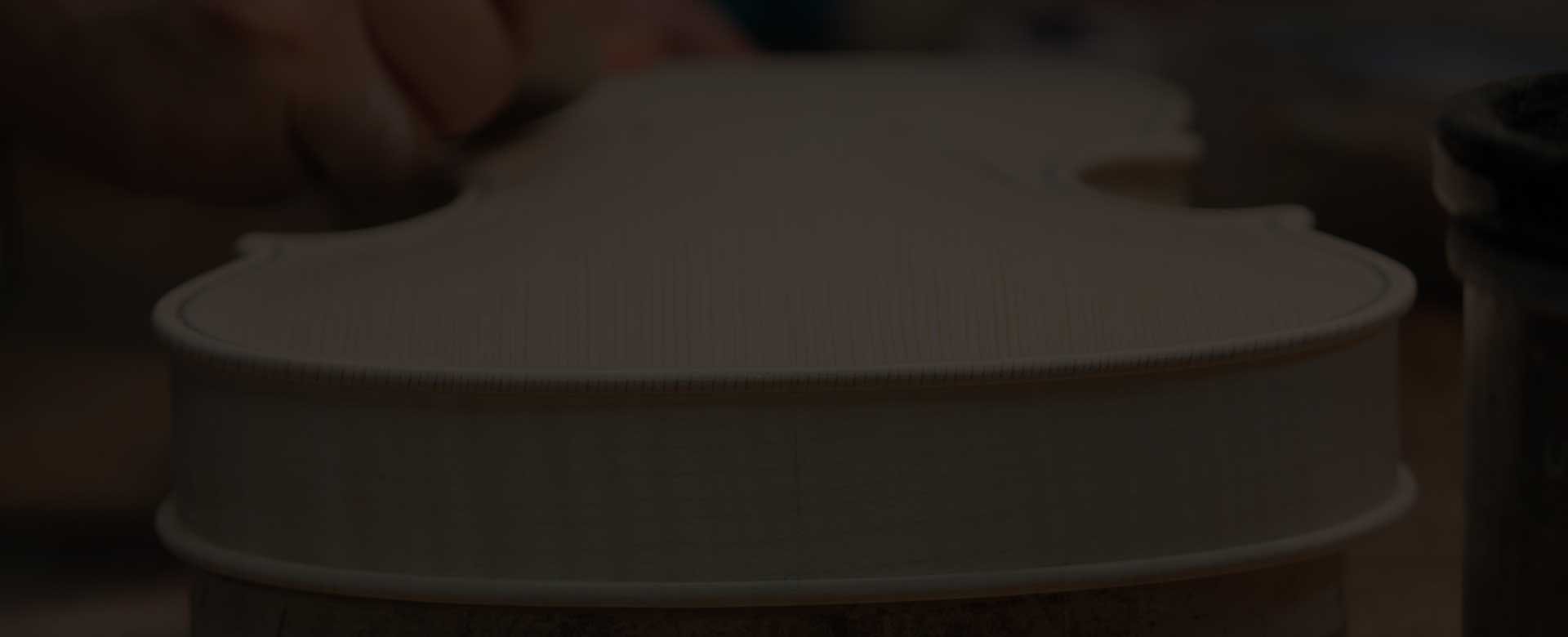
LET’S SUPPORT THE CONSERVATION INITIATIVE
PERNAMBUCO
Currently, two wood species are used in the violin and bow-making trades that are of concern: ebony and Pernambuco. Both were once plentiful! Pernambuco was so commonly grown in Brazil that an entire region of the country is named for it. It was ubiquitous throughout Europe prior to the Industrial Revolution as it was an important dyewood and therefore important to the textile industry of Europe and North America. Bowmakers who use Pernambuco often have very red hands after a day’s work as that dye rubs off!
But the Pernambuco tree grows in a relatively limited area of the Brazilian coastal forests. It is typically part of a relatively mature forest community, making it difficult to reintroduce seedlings successfully in current forests. Under natural conditions, Pernambuco is listed as endangered on the IUCN’s “Red List.” In 2007 Pernambuco was added to the CITES Appendix II of endangered species, strictly limiting legal logging. That status is not expected to change so there is pressure on bowmakers to both self-regulate as they seek alternatives.
Unfortunately, contemporary bow makers have been unable to find an adequate substitute for Pernambuco. Carbon fiber has been our closest success story. Carbon fiber bows typically have slightly stiffer playability qualities. There are advantages with carbon fiber in our ability to control, and therefore manipulate weights and balances reliably in a manufacturing environment. The sound qualities of carbon fiber present more significant obstacles. We cannot reproduce the range of harmonics and overtones generated by the Pernambuco bows in conjunction with the instruments using carbon fiber.
Recognizing this dilemma, an association of international bow makers, musicians, and others was formed called the International Pernambuco Conservation Initiative (IPCI). The IPCI negotiated with CITES to allow the continued use of preexisting stocks of Pernambuco for bow making. In return, the IPCI agreed to fund seedling planting projects and research for Pernambuco preservation. Efforts to reestablish Pernambuco in its natural habitats have had poor success rates. Small plantations have been more successful, but the existing stocks of Pernambuco for bow-making are diminishing. For more information, contact the IPCI (http://www.ipci-usa.org/index.html)
EBONY
As we considered the woods we use in our V. Richelieu instruments, use of ebony was our highest concern. Ebony has some wonderful properties for violin making. The jet-black ebony fingerboards and fittings in contrast to the lighter spruce and maple wood colors attract our attention. The black color, dense wood and high sound velocity make select ebony tree species a go-to wood in the music industry. To be clear, the jet-black color was not necessary for fingerboards on bowed stringed instruments. Maple and other “lighter, brown” woods were used for fingerboards in the Baroque period, and manufacturing in the 1800s. Boxwood and rosewood pegs and fittings are still common today. But the ebony fingerboards are what we visualize with famous instruments like the Stradivarius and Guarneri family.
But the problem is the increasing rarity of ebony. The dark black, dense ebony tree species grow in relatively specific habitats, limited ranges, in eastern Africa, Vietnam, Laos, Indonesia, Ceylon (Sri Lanka) and southern India. The trees grow slowly and their regeneration is often poorly understood. Seed and genetic banks have a very small representation of the species and only 25% of threatened species are believed to be represented in ex situ (ex. botanical gardens) protected sites. We asked botanical experts In India, a common source for ebony violin parts, about seed bank or genetic conservation efforts of ebony. We received the following response to our enquiries:
“I am Dr. Sreekumar VB Scientist from KFRI. With regard to the conservation of Ebony, to my knowledge, there are no available germplasm or gene bank collections on Indian Species. Isolated trees are available in Botanic Gardens. But an exhaustive collection of different Diospyros species is an urgent need.”
This is tragic as overlogging of commercially popular ebony tree species in Africa has been well documented. As Bob Taylor of Taylor guitars stated:
“Ebony has been a wood that for two, or three, or four hundred years, we’ve gone into countries, and we’ve used the ebony until it’s all gone. Literally. Then we move into another country, and we take their ebony till it’s all gone. Why do I say ‘we’? —because ebony isn’t cut in Africa for use by Africans. Ebony is cut in Africa to be sold to people like us, to make things like guitars out of. That’s the simple truth of the matter.”
Gaboon ebony (Diospyros crassiflora), has seen a 50% population reduction in Africa in the past three generations. In Madagascar, its illegal logging is sometimes compared to the blood diamond trade where humans as well as the natural resources are violently exploited. Ceylon ebony (Diospyros ebenum), was the common commercially traded species. India and Sri Lanka have banned its export due to exploitation. Mun ebony (Diospyros mun) from Vietnam and Laos is critically endangered. 80% of its population has been lost. Possible alternatives like Wenge and Peruvian walnut are similarly at risk. (https://www.wood-database.com/ebony-dark-outlook-darkwoods/#:~:text=It%20is%20on%20the%20IUCN,its%20natural%20range%2C%20and%20exploitation.). As Bob Taylor implies, market demand outpaces the reproduction rate of ebony.
Aack….can making beautiful music play a role in this?? It’s shocks the very fibers of what we are trying to accomplish to consider that beautiful art should come at such a cost! V. Richelieu needed an alternative to ebony so that our making can be “harmonious” to the world we live in and the resources we draw from it.
Fortunately, alternatives exist! Unlike Pernambuco, engineers have produced commercially viable, and even sustainable wood alternatives. Cured Phonol-formaldehyde (aka “bakelite”) is used in a popular ebony alternative – this particular product offers an ebony-like player’s experience and dimensional stability that performs well as an alternative. Cheaper plastics also abound as ebony alternatives. But for us at V. Richeliue, modern plastics do not fit aesthetically or environmentally with our vision of our wooden, bowed string instrument. Physically, they present challenges to luthiers for routine maintenance and attaching the material to the neck. Environmentally, we are trading one set of environmental issues for another. But for less expensive instruments, they provide a less expensive alternative.
The best alternative we have found lies in the use of Sonowood. “Sonowood” (https://sonowood.swisswoodsolutions.ch/en/bowed-string-instruments) was a project funded by the Gebert Rüf foundation for SwissWood Solutions. Sonowood is 100% made from sustainably grown wood species: maple, spruce, and beech. The wood is treated and compressed significantly to the point that these lighter woods are made so dense they act like ebony in all respects: tonally, aesthetically, and workability. The cost of the Sonowood alternatives is higher than ebony or plastics, but as its use and production grows, that could come down. Aesthetically, musicians have more, attractive color options than ebony (including black). For luthiers, Sonowood works similar to ebony. Planes, knives, and sanding allow us to maintain the surface like ebony, and we can use the same traditional glues to attach the fingerboards. For those with an ebony allergy, Sonowood is a hypoallergenic alternative.
And we love the visual appearance of sonowood on our V. RIcheliue instruments. Spruce and maple have a strong grain figure that is more evident than ebony and the color tones blend harmoniously with the varnish of the plates and match nicely the other fittings. Clients love getting a visually beautiful instrument that is environmentally friendlier than the more traditional woods.
Today, we face some difficult questions as string players. To what extent will we go to maintain our art despite the decline of a species? How much compromise are we willing to accept to adapt? And, provocatively, are the aesthetics or peak performance of musical instruments more important than the decline of a species? We love the traditional aspects of the violin craft, but we also recognize that the world is changing. We won’t make that Faustian choice: beauty or the environment. We need to create Art and Music and we need to do it in a manner that is earth-friendly. Music plays to the soul of a healthy planet.



